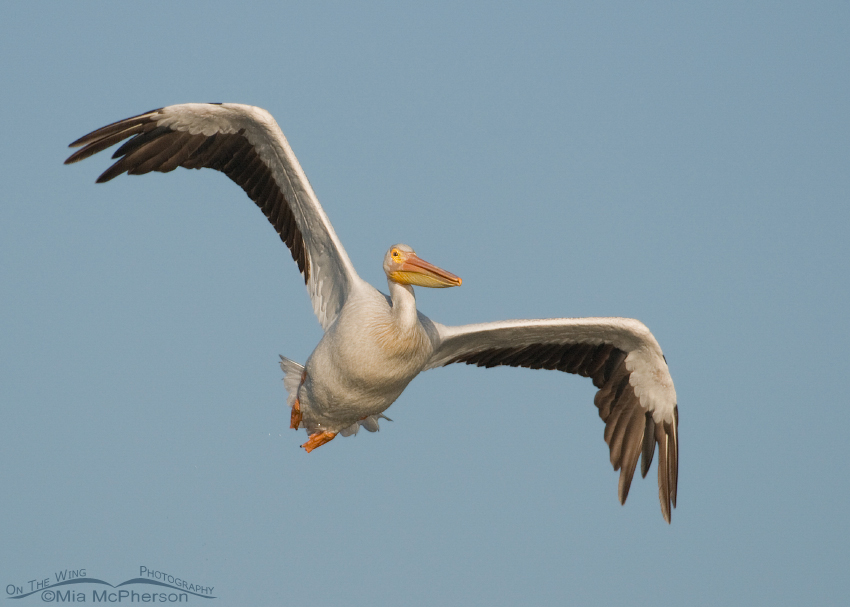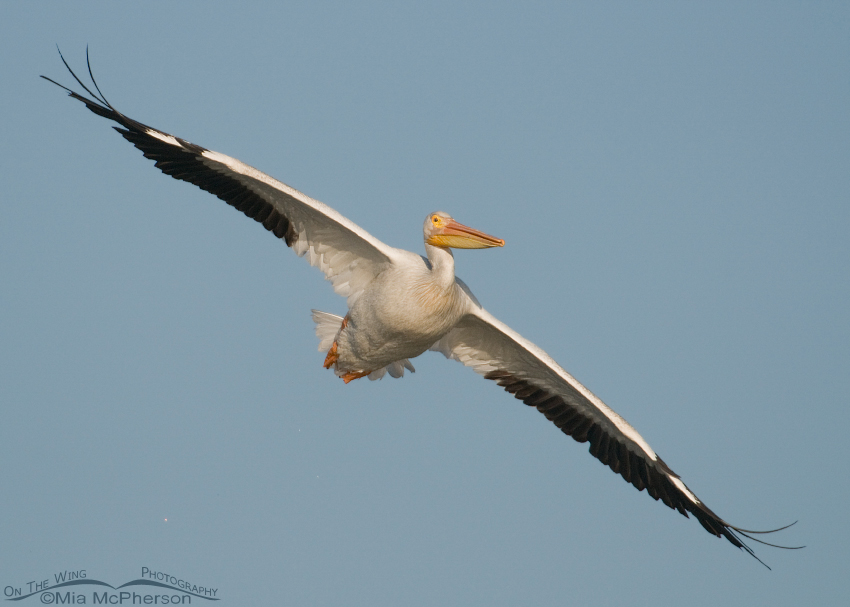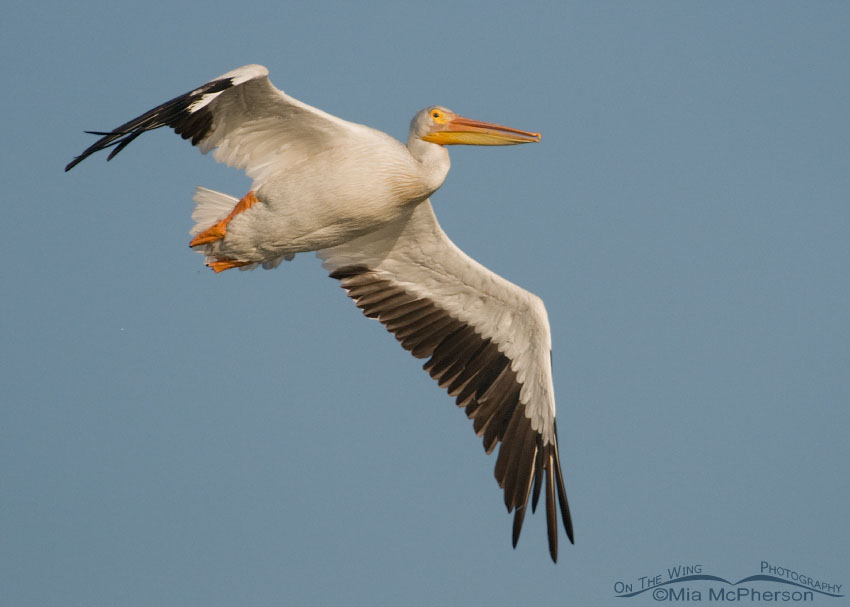 Look at that wingspan – American White Pelican – Nikon D300, f6.3, 1/2000, ISO 500, Nikkor 200-400mm VR with 1.4x TC at 400mm, natural light
Look at that wingspan – American White Pelican – Nikon D300, f6.3, 1/2000, ISO 500, Nikkor 200-400mm VR with 1.4x TC at 400mm, natural light
Yesterday while on the auto tour route of Bear River Migratory Bird Refuge the birds that I saw in the highest numbers were American White Pelicans. There were huge flocks of them in several areas group feeding and some were simply resting or preening. The American White Pelicans are done with rearing their young and they are now spending time fattening up for their fall migration. This one looks like it has been eating well, look at that chest.
 American White Pelican showing the nearly 9 foot wingspan – Nikon D300, f6.3, 1/2000, ISO 500, Nikkor 200-400mm VR with 1.4x TC at 400mm, natural light
American White Pelican showing the nearly 9 foot wingspan – Nikon D300, f6.3, 1/2000, ISO 500, Nikkor 200-400mm VR with 1.4x TC at 400mm, natural light
American White Pelicans have a wingspan of about 9 feet, in North America only the California Condor has a larger wingspan than these pelicans. The photo above shows the same pelican as the first image one frame later.
 American White Pelican flying past – Nikon D300, f6.3, 1/2500, ISO 500, Nikkor 200-400mm VR with 1.4x TC at 400mm, natural light
American White Pelican flying past – Nikon D300, f6.3, 1/2500, ISO 500, Nikkor 200-400mm VR with 1.4x TC at 400mm, natural light
Three frames later the pelican had turned towards the east which gave me nice light under both of its wings. I didn’t notice until I edited the file that the pelican had opened its bill slightly.
There were pelicans every where yesterday at Bear River migratory Bird Refuge even though it has been so dry this year.
Life is good.
Mia
Click here to see more of my American White Pelican photos plus facts and information about this species.


woow, the shots in fligth with the bird coming almost in your direction isn t so easy to expect, it s a great moment, and greats pictures with it =)))
have a ince WE mia
Thanks Eric!
Just lovely shots, Mia … well, as always, but also always worth noting. I also love pelicans, both the white and brown. I always feel as though I’ve come upon an enchanted forest (or wetland) when I round a bend and see a flock of pelicans.
I also love pelicans, both the white and brown. I always feel as though I’ve come upon an enchanted forest (or wetland) when I round a bend and see a flock of pelicans.
Ingrid, I love both species of pelicans that we have here in N.A., I just don’t get to see the Brown Pelicans in Utah. Some of my favorite memories of pelicans are coming up on a flock that is backlit as they lift off, I wish I could capture that as lovely as it is. Thanks for commenting!
Impressive bird. I love the image with those long wings straight out. Good work Mia!
Thanks Utahbooklover, these birds impress me too!
Fantastic! Love white pelicans!!
Thank you Beverly.
Great shot Mia! Love these bird. Up in Green Bay, you can see them by the dozens, and it’s always a treat to see them flying overhead in groups.
Thanks Ricky!
Mia, I agree with Patty that he is “one fat bird!” But beautiful all the same. The wing span is amazing and I love the second photograph best. Makes him look very graceful in flight. All these pics are lovely! It must be a gorgeous sight to see these birds flying overhead.
Lynn, even those American White Pelicans are huge they are very graceful in flight, landing and taking off though they can look quite comical. It really is amazing to see a squadron of American White Pelicans wheeling in the sky. Thanks for your comment.
These are so impressive! Coming from P.R., when you see these White Pelicans for the first time it’s an experience!. We have a smaller subspecies of the Brown Pelican, the ‘Caribbean Brown Pelican’, and they’re smaller than these. We have sightings of White Pelicans on the southwest part of the island but they are vagrants.
Maria, I had read that sometimes vagrant American White Pelicans show up in Puerto Rico and Cuba, thanks for confirming that. Brown Pelicans are quite a bit smaller than the American White, interesting to know the ones in Puerto Rico are smaller yet. Thanks for commenting.
Great shots. Such a huge object.. bless them ;)… I wonder if they like being this big ..
Thanks Stu, they seem to do well even though they are huge!
That is stupendous and it’s in flight.
Thanks Bob. They look huge when they fly in close!
That is one fat bird! I wonder if it takes extra energy to keep such a heavy looking body airborne…beautiful, graceful wings. Where do they migrate to?